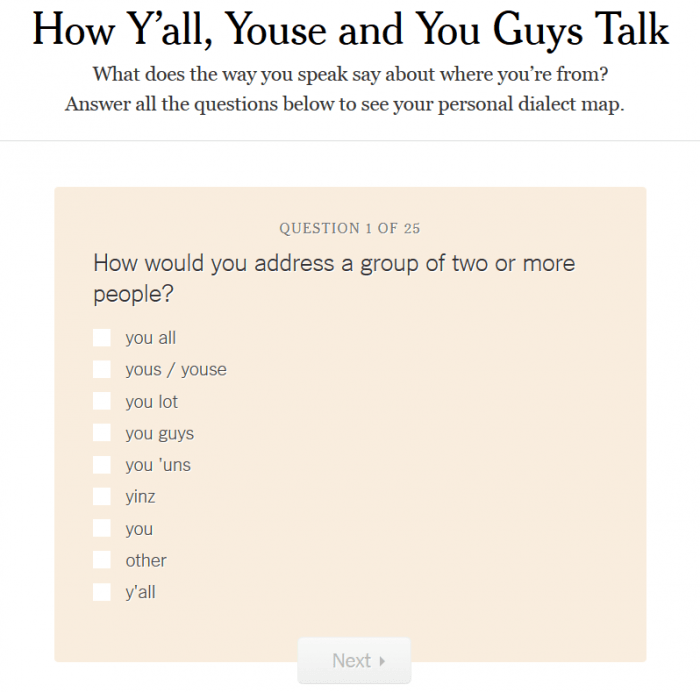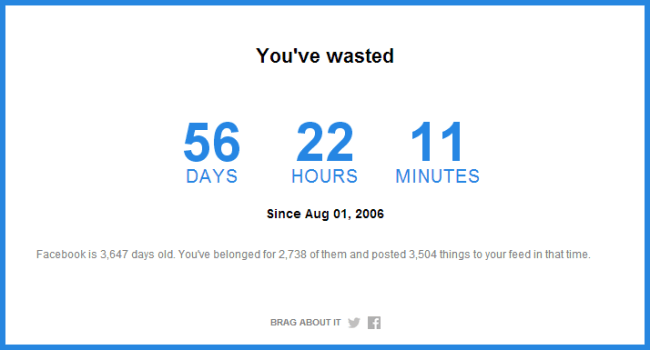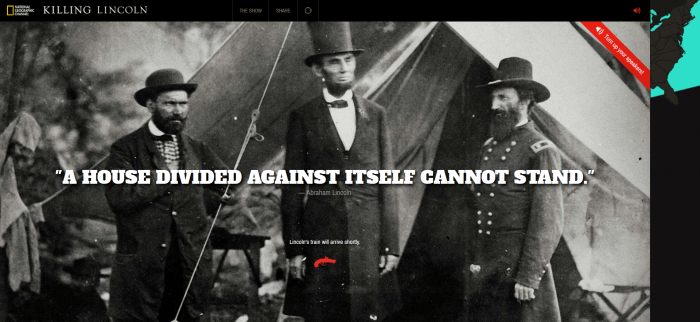Editor’s note: Today’s post comes to us courtesy of Josh Haynam, the co-founder of Interact, a fast-growing platform for creating responsive quizzes that help you generate engagement and capture leads. Follow Josh on Twitter @JHaynam.
In 2013, the most viewed articles for the New York Times, TIME, and National Geographic were not articles, but pieces of interactive content. We’ve officially entered into the age of “interactive” content that goes above and beyond. It’s the new kid on the block, one that your business can’t afford to ignore.
But what exactly is “interactive content”?
The Harvard Business Review defines it this way:
“The term interactive, as we interpret it, points to two features of communication: the ability to address an individual and the ability to gather and remember the response of that individual. Those two features make possible a third: the ability to address the individual once more in a way that takes into account his or her unique response.”
 We could, more simply, think of interactive as “a piece of content that requires engagement.” From the audience’s perspective, it’s active instead of passive content. A few examples of interactive in different channels and for different business goals are:
We could, more simply, think of interactive as “a piece of content that requires engagement.” From the audience’s perspective, it’s active instead of passive content. A few examples of interactive in different channels and for different business goals are:
- Blogs: Allowing people to comment and interact with a blog post author
- Social: Facebook apps to increase interest and engagement. The sample to the right is for the movie “Taken.”
- Advocacy: A referral offer that rewards people for referring their friends
- Polls and quizzes for multiple purposes (educational, engagement, etc.)
- Website traffic: Here’s an amazing example of interactive content that was nominated for an Interactive Media Emmy last year:
Interactive quizzes are a great way to start
It’s relatively fast and easy to create a fun, interactive quiz, so let’s dig down into the details. Quizzes ask questions and provide results to the user based on how the user answered those questions; each set of results feels specific and personal to the user. This means you can use quizzes to address even a large audience as individuals with striking precision. Such precision is part of the reason for such high traffic to interactive quizzes.
Where can you find content for quizzes?
“Almost anyplace” is the short answer. A few ideas:
Categorization
This is the type of content that tells you which (dog, philosopher, Disney character – fill in the blank) you are. The New York Times stumbled across this type of content when an intern created a dialect quiz, which took just eleven days to become their most popular piece of content in 2013.
 The NYT quiz asks twenty-five simple questions and then spits out a result that tells you where in the United States your particular form of speech comes from.
The NYT quiz asks twenty-five simple questions and then spits out a result that tells you where in the United States your particular form of speech comes from.
The piece blew up on social networks, with people comparing their results. Discussions raged on for days.
Buzzfeed has perfected this art form, and they’ve created a set of best practices to follow. They boil down to the following six steps:
Practical and personal advice
This form comes from some age-old wisdom quoted by the writer Malcom Gladwell, who said, “Practical and Personal Advice is Memorable.” We remember the things that apply to us directly.
TIME created a very simple interactive piece to determine how much time people have wasted on Facebook. The page received over four million views and was the top article on the site for all of 2013.

The advice doled out was very personal and somewhat practical, and enough to cause quite a stir. Many were surprised by their result, and discussions swirled around comparing the amount of time wasted on Facebook to how long it takes to complete tasks like writing the Bible and reading the Encyclopedia.
The good old assessment
As long as it has nothing to do with school, people love to see where they stand. Skilledup, an online course site based out of Canada, created an assessment to determine how well people know Microsoft Excel and embedded it into an existing article on the subject.
The result was over 25,000 views in the first two months running, not too shabby for a boutique site. Skilledup used the quiz to help generate email subscribers and was able to capture 1,600 new leads with it.
How to build your own interactive content
Method 1: Re-purpose existing articles
Your best source of interactive pieces is often your most promising static content. For example, when Skilledup created their quiz, it was just an amalgamation of existing facts on the page; nothing new was added.
When you’ve got a good piece of content, it can often be turned into something interactive. If you don’t do it, others will. The New York Times posted Gretchen Reynolds’ fitness story, The Scientific 7-Minute Workout, which others quickly turned into an interactive app driving millions of views … only those views didn’t go to the NYT, they went to third parties.
To use this method to create a quiz, ask yourself the following questions:
- Do I have content that can be turned into questions?
- If I make those questions interactive, will I be able to give people practical advice based off of their answers?
If both answers are yes, you should invest in making your content interactive.
Method 2: Answer questions
What big issues do your customers deal with? The answers to those issues are most likely where your best content comes from, and by adding conversation, you can go one step further.
To show what I mean, let’s look at a company called Dapulse that helps teams work more efficiently. One of the most important aspects of working well as a team is for its members to understand what makes them, and the others, tick – why they come to work every day.
But discerning what motivates people is a difficult thing to figure out, so Dapulse created an assessment, “What Kind of Product Manager are You?,” and shared it with their users – helping them answer a tough question in a fun way.
The assessment contains a lot of the same content that would be in an article about management styles, but turned into a quiz format. This makes the topic both share-able and enjoyable while still providing value.
Best practices for interactive content
- Root it in reality. The most shared pieces of interactive content all start by solving a real issue. For example, for the “How Much Time Have You Wasted on Facebook?” quiz, the problem is productivity. For the “Where Does Your Accent Come From?” quiz, the issue is self-perception.
That being said, you should follow the Shaq rule for quizzes. The famous basketball star recommends making all of your content 80% for entertainment, 15% to inform, and 5% to sell. Make your content mostly for fun, somewhat to learn, and a little bit to sell your product.
- Design for sharing. Interactive pieces often contain very little text that can be indexed by Google’s crawlers, so your best bet for traffic is social.
 The best format for sharing interactive content results goes like this: “I got (result of the content); Title of the Content.” For example: “I got Creative in What’s Your Blogging Personality?” For the content titled “Where does your dialect come from?,” the shareable snippet would be “I got Tennessee, where does your dialect come from?” This share has a valuable personal aspect as well as a call to action for others to get involved.
The best format for sharing interactive content results goes like this: “I got (result of the content); Title of the Content.” For example: “I got Creative in What’s Your Blogging Personality?” For the content titled “Where does your dialect come from?,” the shareable snippet would be “I got Tennessee, where does your dialect come from?” This share has a valuable personal aspect as well as a call to action for others to get involved.
- Stay positive. Yes, you want your content to be accurate and provide valuable, personal information to visitors, but that doesn’t mean you need to go all the way to warts-and-all disclosure in your descriptions. For example, Buzzfeed quizzes provide only positive results that lift the spirits of takers, and the traffic they generate is enormous.
Editor’s note: “Positive results” not guaranteed. I took the Buzzfeed quiz “What Does Your Name Say About Your Love Life?” and this was my result: “You got: 10 children and some vomit. You will end up with the last person you texted an emoji to. Before that, you will marry the last person who posted on your Facebook timeline. You will have 10 children. You and your lover will have a small backyard wedding. You will get too drunk and have to throw up in the bushes.” #NotAwesome #(butFunny)
Interactive content is still coming into its own as a popular form. These pieces have the unique ability to be personal while still reaching a large audience, and that’s why they’ve garnered such massive traffic. By following simple best practices, you can create an amazing piece that blows up traffic on your site.
Have you had success with interactive content? Tell us about it!





